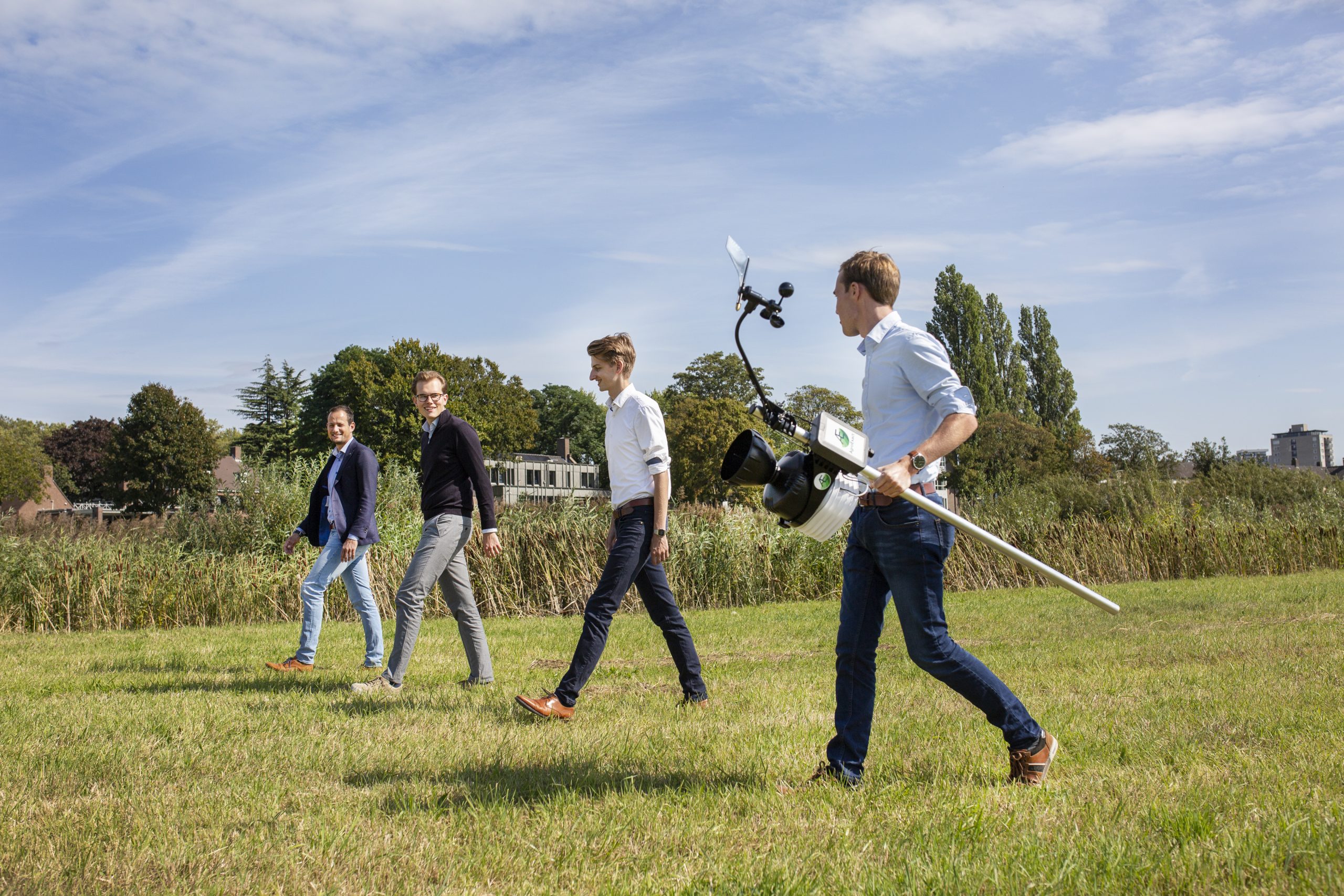
The Data Week in Den Bosch, Netherlands kicks off on 26 October, where universities, governments and companies will come together to share the latest insights on data and technology. During this week we will pay extra attention to this topic by means of a series of articles on technology-related initiatives in the province of Brabant, Netherlands.
The technology to predict the influence of the weather on farmland is accelerating. Farmers used to have to drive across the land with tractors, dig a hole and knead a clump of dirt. With the help of common sense, they determined whether the soil was wet enough. Those days are over. AgroExact helps farmers by installing local weather stations and sharing weather data via a simple app. Founder Sven Boogaard explains: “It brings convenience, but above all improved forecasting.”
A farmer is forced to respond effectively to weather conditions. By placing local weather stations on agricultural land, they gain insight into processes that affect agriculture such as precipitation, temperature and wind speed. AgroExact brings this data to the farmer in a simple and fast way. “This is necessary because crops grow more or less well depending on the amount of rain,” says Sven. “Corn grows very deep and has good access to groundwater, but the roots of onions and potatoes are shallow. That makes them very dependent on rain.”
Each farmer can view weather data from five different AgroExact weather stations. “We make sure that there are enough weather stations near the farmer’s land,” says Sven. Although farmers have always sworn by the old-fashioned wet fingerwork when it comes to predicting the weather and the humidity of agricultural land, many farmers are happy with new innovations in this area. “Especially farmers with multiple parcels of land could use some help,” says Sven.
AgroExact’s weather stations are now used by dozens of farmers in Brabant, including the large farm Straver in Altena. “They are all very satisfied. All they have to do is pick up their phone and they know where they stand.”
From ones and zeros to understandable language
The data farmers receive on their phones is displayed in an understandable way so that they can make use of it. But a lot of calculation work precedes this. Niek van Andel, a meteorologist with the company, explains: “We all receive data from the weather station. First, we have to convert binary code into temperature, precipitation and wind. Then we use it to make additional calculations. For example, you can determine how much precipitation evaporates. You can also take the type of soil into account.”
A weather station in the backyard
Local weather stations are basically nothing new. “I used to have my own weather station in my backyard. Farmers used to come to me to gain insight into weather conditions.” Still, a single weather station located miles away offers little security for a farmer. “The amount of precipitation varies a lot even locally. That’s why we came up with the idea of using weather stations for farmers.”
But the start-up still has something unique about it. “Ultimately, we want to build a network of weather stations throughout the Netherlands,” says Sven. “Deploying weather stations on as large a scale as we are planning is something that has never been done before.”
Brabant – a positive start-up climate
Although the company is now active mainly in Brabant only, it is growing. According to Sven, the company has been able to expand quickly due to the positive start-up climate there. “In 2018 we participated in the Data Week. We talked to all kinds of investors at that time,” says Sven. AgroExact took part in the Investor Readiness Program (SB1) of the Brabantse Ontwikkelings Maatschappij (BOM) and subsequently secured several investments. “The ecosystem for start-ups in the province has certainly done us a lot of good.”
Sven and his colleagues have a clear goal in mind. “We want to provide at least 2,000 farmers with data.” That is exactly why, for the time being, AgroExact is focused on continued growth. “That is the biggest challenge for us. This growth will not only be in the number of customers; Our team will also have to expand.”
Increasingly extreme weather
According to Sven, local weather stations will become increasingly important in the future. This has mainly to do with climate change. “Whereas in the past you used to have lighter precipitation, now you have fewer but much heavier downpours. As a farmer, you have relatively little to gain from these heavy showers.”
The start-up will therefore become more and more relevant in the future, Sven believes. “Rapid updates that warn of changing weather conditions will become truly indispensable.”
Would you like to know more about initiatives or businesses in the Brabant region? Then take a look at Brabant Brand Box.

